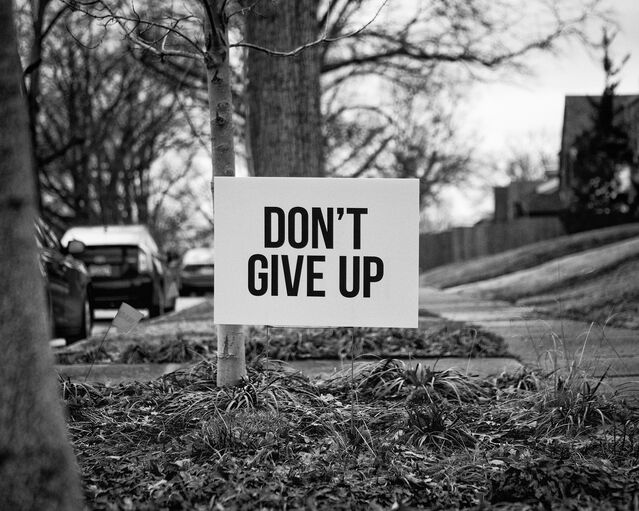Suicide
September Is Suicide Prevention Awareness Month
Advice from a New York psychiatrist in the COVID era.
Posted September 15, 2020

As of 2018, suicide was a rising cause of death in the United States and the 10th leading cause of death. In 2018, 48,344 Americans died by suicide and an estimated 1.4 million suicide attempts were documented. These are just the deaths and attempts that were reported—many likely went undetected because not every person gets help and not every case is identified.
Suicide and serious life-threatening mental illness are huge and insufficiently addressed problems in our society and I won’t pretend to have all the answers about the system at large or all the solutions for every person who is suffering. It is understandable that many people feel intimidated by the idea of dealing with suicidal thoughts, whether they themselves are personally affected or want to help someone who is. As a practicing psychiatrist, suicidal thoughts are a common symptom that I assess for and help patients and their families to cope with. I won’t spend time below explaining treatment for depression, including medications and psychotherapy, since that info is specific to that condition whereas suicidal thoughts are common to a number of common conditions and can be chronic and experienced on their own.
The most common question is what do I do and how do I know if I should get professional help? Unfortunately, the answer is not always black and white, but here are some ways we address this issue in clinical practice, though please note that — to state the obvious — this article does not substitute for personalized professional advice from a mental health professional.
First of all, we as mental health professionals do strongly recommend seeking professional help and especially in certain cases: such as if the suicidal thinking is associated with a wish to end one’s life, if self-harm or a suicide attempt feels imminent, if there is a past history of life-threatening suicide attempts, or if the person is unable to stay safe. Contrary to popular belief, not all suicidal thoughts are considered an emergency or require hospitalization to be treated and our general rule of thumb in clinical practice is that if a person can stay safe, has reasons to continue living, and establish a way to work towards feeling better, then a psychiatric hospitalization can be avoided.
What exists that I can use on my own or recommend to a loved one to help with this problem? What is in my control that I can do to reduce my risk for suicide if I am having troubling thoughts? There absolutely are coping skills you can learn and tools you can use. During my psychiatry residency training, I was privileged to get exposure to a newer, evidence-based psychotherapy called Dialectical Behavioral Therapy. The central idea of this treatment philosophy is that a person can learn skills to regulate their emotions, stay safe, tolerate distressing situations, and become more self-aware.
Not everyone wants therapy or has access to a therapist trained in this treatment and there are several self-help books that can be used to learn some of these skills. For people who are able to safely manage as outpatients, a self-help approach is a great tool in addition to therapy and can be very empowering. Making a safety plan that is then shared with loved ones can help to solidify plans to stay safe in case you experience more distressing emotions. There are apps online that have templates to help make a safety plan.

What if I am feeling suicidal right now and I’m not sure what to do about it? Safety comes first and foremost. If you can’t be safe you need to get help so that you can stay safe and have a chance of getting to a point that you feel better.
Steps you can take on your own to stay safe include avoiding using substances or alcohol since these can impair your judgment or reduce your impulse control. In addition, removing means for suicide from the environment is another important step, such as getting rid of firearms, or if there are specific methods of suicide that have been considered, finding ways to reduce access to those.
A suicide prevention hotline is a useful tool that I have recommended often and that many of my patients have found helpful — and the staff on the other end of the line are trained to help people who are suffering with suicidal thoughts. They not only assist in assessing if the person needs help and in getting help, if needed, but they also safely pass the time while the person is having the thoughts. Distressing emotions tend to fluctuate over time. If a person in emotional distress can pass the time until the emotion becomes less intense, they can often get themselves into a safer state. In addition to hotlines one can call, there are also online texting services, chatting, and apps that can be similarly helpful. NYCWell, created by New York City, has been an innovative initiative to offer suicide prevention tools such as a hotline and it also connects people to referrals and resources.
It’s important to maintain hope in times of crisis. The last tip I would like to leave you with is that we find hope in so many different ways, which are different for each person. Spend some time exploring what’s meaningful to you and write it down. As time goes, work on expanding and finding more reasons for living and deepening your connection or involvement with the ones you have identified.
There’s a great research tool developed at the University of Washington called the Reasons for Living Inventory that includes examples of many common and powerful reasons people have for staying alive. I have given this questionnaire to patients and always find the responses and conversations it generates to be powerful and moving. For example, some people want to live because of their values or religious beliefs, others because there are important things they want to accomplish or things they enjoy doing or want to experience. Identifying motivations to continue living and sources for optimism, and keeping them in your conscious awareness, can be an important step to maintain your hope and commitment to live.
Useful phone numbers and websites:
Ways to find help:




